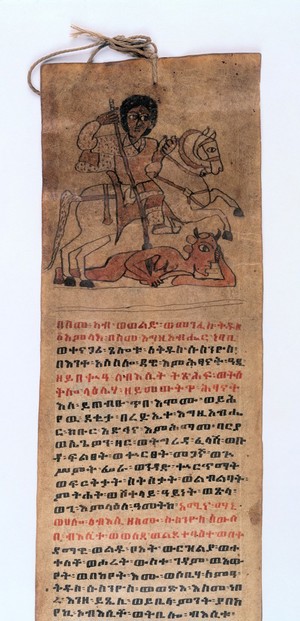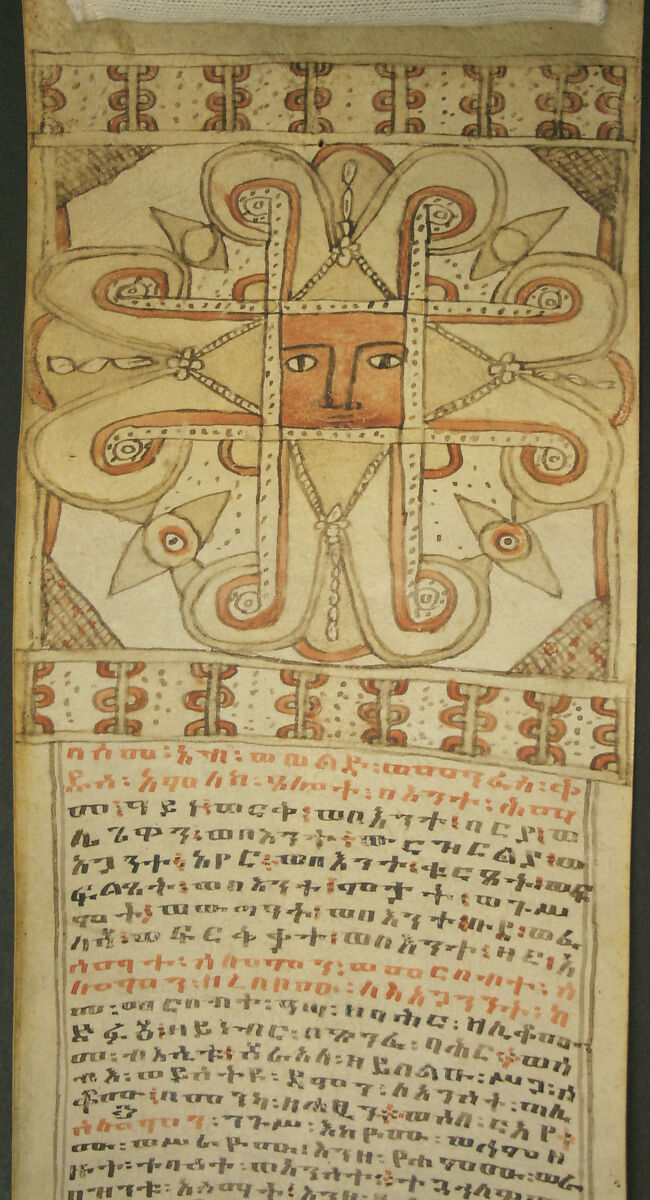Ethiopian Healing Scrolls


Annotation
Ethiopian healing scrolls are believed to eliminate sickness by ridding spirits and demons from an ill person. Originating sometime between the 1st and 8th century CE in the Axum empire, the scrolls are still used to this day, and still written in the Ge’ez script of the Axum empire. These scrolls are used as part of a larger healing process, and are meant to be used in conjunction with plant and animal medicine; they are meant to alleviate more of the spiritual issues. The scrolls were significant for illiterate populations, as the designs and illustrations are considered their own form of talismans that act as an aid for the written prayers.
The scrolls were still in heavy use in the 19th century, though their use has declined significantly since the late 20th century. Ethiopian healing scrolls have been an important and consistent part of practice for over a thousand years, excepting a period in the 15th century when emperor Zar’a Ya’eqop condemned their use and also persecuted those who used any sort of magical objects or did divination.
Credits
"Ethiopian Scroll comprising prayers" Wellcome Collection, Undated, https://wellcomecollection.org/works/cs94db4g.